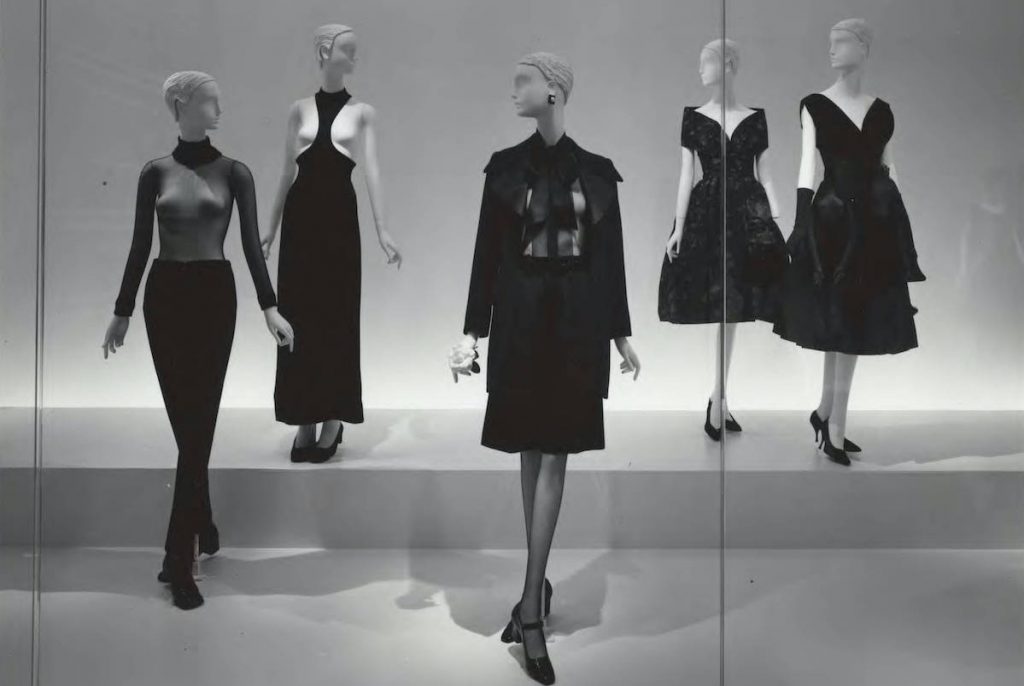Bare Witness
Dress surrounds and contains the body. Yet, dress also discloses and discovers the body. Inexorably, the body is defined by the parts that are unclothed as well as by the parts clothed. Bare Witness proposes that fashion, by creating windows to the body and margins with the skin, designates the individual body and the body politic.
By examining decolletage, the bared back, the revealed midriff, the visibility of ankle and leg, and the transparency of fabrics, Bare Witness strives to understand the power of the body and the power of clothing to articulate the body. What we wear negotiates our physicality; it demarcates the parts of the body and realizes it as a sum of those parts; and it positions the body- corporeality -in the civilized circumstances of society. That West em dress has continually varied its uses of apertures to the body and its exposure of critical body parts suggests the changing needs and roles of the body in culture.
The conventional explanation that shifting erogenous zones are the reason body exposure is always changing assumes only the viewer and presumes that women dress only to please “the male gaze.” That idea is an insufficient explanation for the dynamic views evident in this exhibition: the visible leg of 1920s fashion was mandated by women’s power and mobility in the age of modernism; the bare midriff testifies to non-Western stimuli for Western dress; deviations in decolletage are contingent upon the support structure of the bodice.
As always, fashion is a complex system dependent upon the wearer’s self-confidence and perception, the viewer’s attitude, and society’s opinions about self, body, and social contract. To realize that_ fashion constructs windows to the body is to know that fashion builds personal perception and constructs the collective consciousness. Bare Witness may reveal an inner truth underlying clothing’s apparent concealment.
Images courtesy of Metropolitan Museum of Art


